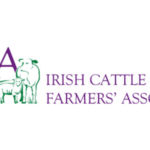SUNDAY INDEPENDENT – 13 MARCH 2016

Monaghan tops the country’s ‘broadband blackspot’ list – with Waterford enjoying the fastest download speeds anywhere in Ireland.
Access to broadband emerged as one of the key election battlegrounds and – to the surprise of Government parties – the focus of deep voter dissatisfaction both in pre-election opinion polls and at the ballot box.
Now, new details have emerged that prove that large swathes of the Irish countryside have been left without reliable internet connectivity.
Wexford and Kerry are seriously lagging behind the rest of country – with average download speeds of just 8.3 megabits per second (Mbps) and 8.6Mbps respectively.
The Taoiseach’s heartland of Mayo is also way down the national league table, with a speed of just 9.4Mbps.
Offaly (9.8Mbps), Cavan (10.1Mbps) and Clare (10.8Mbps) are also sluggish compared to the rest of the country.
Topping the list is Waterford, with 28.5Mbps, followed by Dublin at 27.9Mbps, and Kildare, which came in at 26.5Mbps.
Also in the top tier of broadband-connected counties are Carlow (21.1Mbps), Laois (19.3Mbps) and Cork (16.8Mbps).
In the mid-table are Galway (13.7Mbps), Westmeath (13.6Mbps) and Longford (12.6Mbps).
Overall, Ireland’s average broadband speed is 14.7Mbps.
Alan Ward, marketing director of comparison website comparebroadband.ie, said internet users across Ireland experience a wide range of broadband speeds, with some users being left in the “slow lane”.
High-speed broadband is now regarded as a necessity for modern living and working. Mr Ward said more needs to be done at government level to rectify the situation.
“For example, Monaghan residents receive average broadband speeds (8.2Mbps), that are less than a third of those that people living in Waterford and Dublin enjoy,” he told the Sunday Independent.
However, while variation in download speeds might be frustrating for some, it’s important to remember that there are a wide range of internet options out there.
“Residents in Westmeath and Leitrim might be surprised to find that wireless internet providers are delivering speeds as fast, and sometimes faster, than the wired options available locally,” he added.
Seamus Sherlock, rural development chairman of the Irish Cattle and Sheep Farmers’ Association (ICSA), has called for rural broadband to be made a top priority by the next government.
He pointed out that farmers are now expected by the Department of Agriculture to do most of their administration work online.
“However, the question arises as to how farmers are expected to comply when they do not have access to adequate broadband in many counties.
“Farmers have to jump through hoops to comply with the demands of the department in order to receive their payments.
“We have had to adapt to many new procedures and are happy to do so, but completing applications online when you don’t have access to broadband will cause serious difficulties,” he said.
He also said that rural dwellers feel “marginalised” when it comes to broadband access.
“It is unacceptable for those in rural Ireland to be consigned to battle with poor connectivity.
“Over and over again we hear of the problems a lack of broadband is causing in rural areas. It is adding to the isolation many in rural Ireland feel – and is contributing to the demise of local communities.”
Meanwhile, Eir has announced further details of the 100,000 rural homes and businesses to which it plans to roll out high-speed fibre broadband over the next year.
These householders are among a group of 300,000 that were originally due to be part of the State’s subsidised €1.5bn National Broadband Plan (NBP), the tender for which is due to be awarded later this year.
Eir, however, intends to wire them up anyway, with fibre that can be run straight into buildings from a network strung across telegraph poles.
It is aiming to expand its fibre broadband network to 1.9 million premises by 2020.
The plan will see speeds of 1 gigabit per second becoming available to 200 communities.
The company said that 1.4 million homes and businesses can already access high-speed broadband in Ireland.
It also says it remains on target to reach 1.7 million premises by this time next year.
Poor-quality rural broadband has been highlighted as a contributory factor in Ireland’s two-tier economy.
According to a recent report, Ireland is now seventh in the world for average broadband speed.
However, the study also found we have some of the most pronounced two-tier coverage in Europe.




